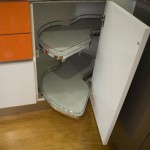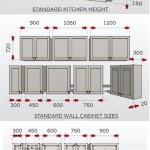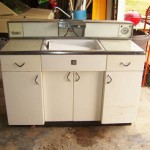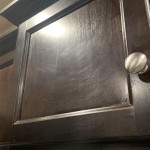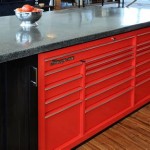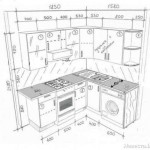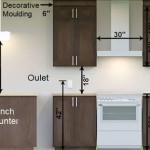Enhancing Kitchen Aesthetics: The Role of Moulding Between Kitchen Cabinets and Ceiling
The visual appeal of a kitchen is often a confluence of various design elements working in harmony. Among these elements, the intersection where kitchen cabinets meet the ceiling presents a unique opportunity for aesthetic enhancement and functional refinement. Employing appropriate moulding in this space can transform a kitchen from simply utilitarian to a room of sophisticated design. This article explores the types, considerations, and benefits of integrating moulding between kitchen cabinets and the ceiling.
Types of Moulding for Cabinet-Ceiling Integration
A diverse range of moulding options is available to suit various kitchen styles and budgetary constraints. The selection of the right moulding hinges on factors such as the existing cabinet design, overall kitchen décor, and the desired level of visual impact.
Crown Moulding:
Arguably the most popular choice, crown moulding provides a classic and elegant transition between cabinets and the ceiling. It’s characterized by its elaborate profiles and ability to create a sense of height and grandeur. Crown moulding can be manufactured from various materials including wood, medium-density fiberboard (MDF), and polyurethane. Wood crown moulding offers natural beauty and can be stained or painted to match the cabinets. MDF is a cost-effective alternative that accepts paint well, while polyurethane moulding is resistant to moisture and ideal for kitchens prone to humidity.Light Rail Moulding:
Primarily functional, light rail moulding is designed to conceal under-cabinet lighting fixtures. However, it also contributes to the overall aesthetic by creating a finished look along the bottom edge of the upper cabinets. While functionally focused on concealing light fixtures, it also provides a subtle visual transition and can be chosen to complement the crown moulding or other decorative elements in the kitchen.Cove Moulding:
Cove moulding features a concave profile and offers a softer, more subtle transition compared to crown moulding. It’s often used in kitchens with a more transitional or contemporary design aesthetic. The gentle curve of cove moulding can add a touch of elegance without being overly ornate.Baseboard Moulding (Upside Down):
An unconventional yet effective choice, using baseboard moulding installed upside down along the top of the cabinets can create a unique and visually interesting effect. This option can be particularly suitable for farmhouse or rustic-style kitchens, lending a touch of repurposed charm.Combination Moulding:
Combining different types of moulding can create a customized and layered look. For example, pairing a simple cove moulding with a more decorative trim below it can add depth and visual interest to the cabinet-ceiling transition.Considerations for Selecting and Installing Moulding
Choosing the right moulding extends beyond aesthetics; several practical considerations must be addressed to ensure a successful integration.
Ceiling Height:
The height of the ceiling plays a crucial role in determining the appropriate size and style of moulding. In kitchens with low ceilings, excessively large or ornate moulding can feel overwhelming and visually compress the space. Conversely, in kitchens with high ceilings, smaller, simpler moulding may appear insignificant. A general rule is to choose moulding that is proportional to the ceiling height and cabinet size.Cabinet Style:
The existing style of the kitchen cabinets should heavily influence the moulding selection. Ornate, traditional cabinets typically pair well with crown moulding that features intricate details. Sleek, modern cabinets may benefit from simpler, more minimalist moulding options like cove moulding or light rail moulding.Kitchen Décor:
The overall décor of the kitchen, including colors, textures, and existing architectural details, should also be considered. The moulding should complement the existing design scheme and contribute to a cohesive and harmonious aesthetic. A consistent color palette between the cabinets, moulding, and walls will create a unified look.Material Selection:
The material from which the moulding is made impacts its durability, cost, and aesthetic appeal. Wood moulding offers natural beauty and can be stained or painted, but it's more susceptible to moisture damage. MDF is a cost-effective alternative that accepts paint well, but it's also sensitive to moisture. Polyurethane moulding is moisture-resistant and easy to install, making it suitable for kitchens prone to humidity. When selecting a material, consider the potential for moisture exposure and the desired level of maintenance.Installation Expertise:
Proper installation is critical to achieving a professional and aesthetically pleasing result. Accurate measurements, precise cuts, and secure attachment are essential. If you lack experience in carpentry or home renovation, it's advisable to hire a professional contractor to install the moulding. This will ensure that the moulding is properly aligned, securely attached, and seamlessly integrated with the cabinets and ceiling.Addressing Gaps and Imperfections:
In many kitchens, the point where cabinets meet the ceiling isn’t perfectly even. Moulding is excellent at concealing these inconsistencies. It acts as a filler, hiding gaps and creating a smooth, finished line, even if the ceiling has slight variations in height or level. This ability to camouflage imperfections is one of moulding's most practical benefits.Benefits of Adding Moulding to the Cabinet-Ceiling Interface
The addition of moulding between kitchen cabinets and the ceiling offers both aesthetic and practical advantages.
Enhanced Aesthetic Appeal:
Moulding provides a finished and polished look to the kitchen. It elevates the visual appearance by creating a smooth transition between the cabinets and the ceiling, adding a touch of elegance and sophistication. It transforms a utilitarian space into a visually appealing environment.Concealing Imperfections:
As previously mentioned, moulding effectively conceals gaps, uneven surfaces, and other imperfections where the cabinets meet the ceiling. This creates a cleaner, more professional appearance, masking any structural irregularities.Increased Perceived Value:
The addition of moulding can significantly increase the perceived value of the kitchen. It signals attention to detail and a commitment to quality craftsmanship, making the kitchen more appealing to potential homebuyers or simply enhancing the homeowner's enjoyment of the space. A well-designed kitchen with thoughtful details like moulding can contribute to the overall value of the home.Protection From Dust and Debris:
Moulding can help prevent dust and debris from accumulating on top of the cabinets. By sealing the gap between the cabinets and the ceiling, it creates a barrier that minimizes the amount of dust and grime that can collect in this hard-to-reach area. This makes cleaning easier and helps maintain a more hygienic kitchen environment.Improved Lighting Integration:
For light rail moulding, the benefit of concealing under-cabinet lighting is paramount. It hides the fixtures and wiring, creating a seamless and visually appealing lighting solution. The result is a soft, ambient glow that enhances both the aesthetics and functionality of the kitchen.Defining Style and Character:
Moulding is a powerful tool for defining the style and character of the kitchen. Whether you prefer a classic, traditional, modern, or rustic aesthetic, the right moulding can help you achieve the desired look and feel. It adds personality and flair to the space, reflecting your personal taste and design preferences.Ultimately, the decision to incorporate moulding between kitchen cabinets and the ceiling is a matter of personal preference and design goals. When carefully considered and expertly installed, moulding can significantly enhance the aesthetic appeal, functionality, and overall value of the kitchen. The choice of moulding should align with the existing cabinet style, kitchen décor, and practical considerations such as ceiling height and material durability. Regardless of the specific style chosen, integrating moulding creates a more polished, refined, and visually appealing kitchen environment.

Cabinet Crown Molding Rogue Engineer

Adding Crown Molding To Kitchen Cabinets Young House Love

11 Kitchen Cabinet Crown Molding Ideas For Your

Diy Kitchen Cabinet Upgrade With Paint And Crown Molding

Crown Molding For Shaker Kitchen Cabinets

Diy Kitchen Cabinet Upgrade With Paint And Crown Molding

Cabinet Crown Molding Rogue Engineer

Extending Kitchen Cabinets To Ceiling American Wood Reface

Adding Crown Moulding To Wall Kitchen Cabinets Momplex Vanilla Ana White

Crown Moulding The Recently Rediscovered Kitchen Solution
Related Posts

